
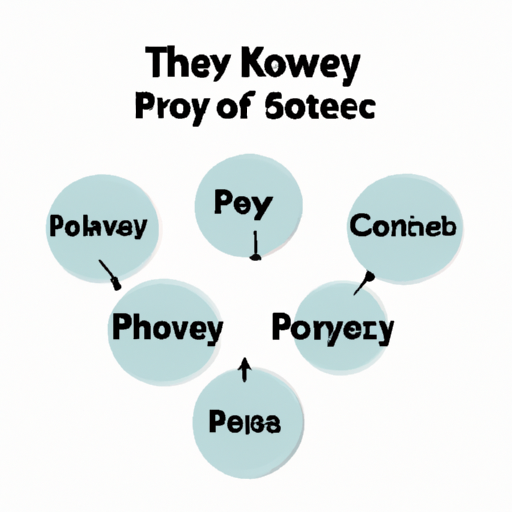
Cover is a leading provider of insurance products and services, offering a wide range of coverage options to meet the diverse needs of its customers. The company offers a variety of key product categories, each designed to provide comprehensive protection and peace of mind to individuals, families, and businesses. In this article, we will explore the key product categories offered by Cover and discuss the benefits of each.1. Auto InsuranceAuto insurance is one of the most popular product categories offered by Cover. This type of insurance provides coverage for vehicles, including cars, trucks, motorcycles, and other types of vehicles. Auto insurance typically includes liability coverage, which protects the insured against financial loss if they are responsible for causing an accident that results in property damage or bodily injury to others. In addition, auto insurance may also include coverage for damage to the insured's vehicle, medical payments, and uninsured/underinsured motorist coverage.Cover offers a variety of auto insurance options to meet the needs of different drivers, including basic liability coverage, comprehensive coverage, collision coverage, and more. Customers can customize their coverage to suit their individual needs and budget, ensuring that they have the protection they need in case of an accident or other unforeseen event.2. Home InsuranceHome insurance is another key product category offered by Cover. This type of insurance provides coverage for homeowners, renters, and landlords, protecting their property and personal belongings against damage or loss due to a variety of perils, such as fire, theft, vandalism, and natural disasters. Home insurance typically includes coverage for the structure of the home, personal property, liability protection, and additional living expenses in case the insured's home becomes uninhabitable due to a covered loss.Cover offers a range of home insurance options, including homeowners insurance, renters insurance, condo insurance, and landlord insurance. Customers can choose the coverage that best fits their needs and budget, ensuring that their home and belongings are protected in case of a covered event.3. Life InsuranceLife insurance is a key product category offered by Cover, providing financial protection for the insured's loved ones in the event of their death. Life insurance typically pays out a lump sum benefit to the insured's beneficiaries, helping them cover expenses such as funeral costs, mortgage payments, and other financial obligations. There are several types of life insurance available, including term life insurance, whole life insurance, and universal life insurance, each offering different benefits and features.Cover offers a variety of life insurance options to meet the needs of different individuals and families. Customers can choose the coverage amount, term length, and other features that best suit their needs and budget, ensuring that their loved ones are financially protected in case of their untimely death.4. Business InsuranceBusiness insurance is a key product category offered by Cover, providing protection for businesses of all sizes against a variety of risks and liabilities. Business insurance typically includes coverage for property damage, liability protection, business interruption, and other risks that may impact the operation of a business. Cover offers a range of business insurance options, including general liability insurance, commercial property insurance, workers' compensation insurance, and more, helping businesses protect their assets and financial stability.5. Specialty InsuranceIn addition to the key product categories mentioned above, Cover also offers specialty insurance products to meet the unique needs of its customers. Specialty insurance includes coverage for specific risks or assets that may not be covered by standard insurance policies, such as jewelry insurance, pet insurance, travel insurance, and more. These specialty insurance products provide additional protection and peace of mind to customers, ensuring that their valuable assets and beloved pets are covered in case of a covered event.In conclusion, Cover offers a wide range of key product categories to meet the diverse insurance needs of its customers. Whether you are looking for auto insurance, home insurance, life insurance, business insurance, or specialty insurance, Cover has you covered. With customizable coverage options, competitive rates, and exceptional customer service, Cover is a trusted provider of insurance products and services, helping individuals, families, and businesses protect what matters most.
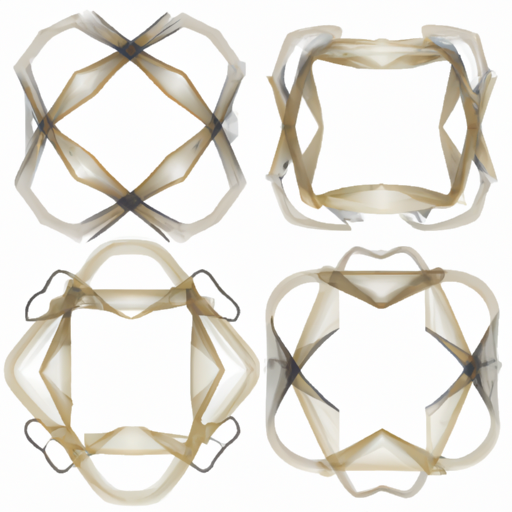
When it comes to choosing the right frame for your eyeglasses, there are a plethora of options available in the market. From classic styles to trendy designs, there is something for everyone. However, if you are looking for a frame that is versatile, durable, and stylish, then mainstream frames are the way to go.Mainstream frames are a popular choice among eyeglass wearers for a variety of reasons. They are typically designed to be timeless and versatile, making them suitable for a wide range of face shapes and personal styles. Additionally, mainstream frames are often made from high-quality materials, such as acetate or metal, which ensures durability and longevity.When it comes to choosing a mainstream frame, there are several parameters to consider. These parameters include frame shape, material, color, and size. By understanding these parameters, you can make an informed decision when selecting the perfect frame for your eyeglasses.Frame Shape:One of the most important parameters to consider when choosing a mainstream frame is the shape. The shape of the frame can greatly impact the overall look and feel of your eyeglasses. There are several popular frame shapes to choose from, including round, square, oval, and rectangular.Round frames are a classic choice that can add a touch of retro charm to your look. Square frames are bold and modern, making them a great choice for those who want to make a statement. Oval frames are versatile and flattering on most face shapes, while rectangular frames are sleek and sophisticated.When choosing a frame shape, it is important to consider your face shape and personal style. For example, round frames are best suited for those with angular faces, while square frames are ideal for those with round faces. Ultimately, the shape of the frame should complement your features and enhance your overall look.Material:Another important parameter to consider when choosing a mainstream frame is the material. Frames are typically made from a variety of materials, including acetate, metal, and plastic. Each material has its own unique characteristics and benefits.Acetate frames are a popular choice for mainstream frames due to their durability and versatility. Acetate is a lightweight and flexible material that can be easily molded into a variety of shapes and styles. Additionally, acetate frames are available in a wide range of colors and patterns, making them a great choice for those who want to add a pop of color to their eyewear.Metal frames are another popular choice for mainstream frames. Metal frames are known for their sleek and modern look, as well as their durability and strength. Metal frames are typically lightweight and comfortable to wear, making them a great choice for those who want a frame that is both stylish and practical.Plastic frames are also a popular choice for mainstream frames. Plastic frames are lightweight and affordable, making them a great option for those on a budget. Additionally, plastic frames are available in a wide range of colors and styles, making them a versatile choice for those who want to experiment with different looks.Color:When choosing a mainstream frame, it is important to consider the color. The color of the frame can greatly impact the overall look and feel of your eyeglasses. There are a wide range of colors to choose from, including classic neutrals like black and tortoiseshell, as well as bold hues like red and blue.Neutral colors like black, brown, and tortoiseshell are timeless choices that can complement a variety of outfits and styles. These colors are versatile and easy to wear, making them a great choice for those who want a frame that will stand the test of time.Bold colors like red, blue, and green are a great choice for those who want to make a statement with their eyewear. These colors can add a pop of color to your look and help you stand out from the crowd. Additionally, bold colors can be a fun way to express your personality and style.Size:The size of the frame is another important parameter to consider when choosing a mainstream frame. The size of the frame can greatly impact the fit and comfort of your eyeglasses. Frames are typically available in a range of sizes, including small, medium, and large.When choosing a frame size, it is important to consider your face shape and size. Frames that are too small or too large can be uncomfortable to wear and may not provide the best fit. Additionally, frames that are too small may not provide enough coverage for your eyes, while frames that are too large may overwhelm your face.Ultimately, the size of the frame should complement your features and provide a comfortable fit. It is important to try on different sizes and styles to find the perfect frame for your eyeglasses.In conclusion, mainstream frames are a popular choice for eyeglass wearers due to their versatility, durability, and style. When choosing a mainstream frame, it is important to consider parameters such as frame shape, material, color, and size. By understanding these parameters, you can make an informed decision when selecting the perfect frame for your eyeglasses. Whether you prefer a classic round frame or a bold red frame, there is a mainstream frame out there for everyone.

When it comes to developing software applications, plug-in components play a crucial role in enhancing functionality and extending the capabilities of the application. A plug-in component is a piece of software that can be added to an existing application to provide additional features or services. These components are designed to work seamlessly with the main application, allowing developers to easily customize and extend the functionality of their software.Choosing the right plug-in component class is essential for ensuring the success of your software application. There are several factors to consider when selecting a plug-in component class, including compatibility, functionality, performance, and ease of integration. In this article, we will discuss some of the key considerations to keep in mind when choosing a plug-in component class for your software application.CompatibilityOne of the most important factors to consider when choosing a plug-in component class is compatibility. The plug-in component class should be compatible with the programming language and framework used in your software application. It should also be compatible with the operating system and hardware platform on which the application will run. Ensuring compatibility will help prevent compatibility issues and ensure that the plug-in component class works seamlessly with the main application.FunctionalityAnother important factor to consider when choosing a plug-in component class is functionality. The plug-in component class should provide the features and services that are needed to enhance the functionality of the application. It should be able to perform the tasks required by the application and provide the desired functionality to users. Before selecting a plug-in component class, it is important to carefully evaluate its functionality and ensure that it meets the requirements of the application.PerformancePerformance is another key consideration when choosing a plug-in component class. The plug-in component class should be well-designed and optimized for performance to ensure that it does not slow down the application or impact its performance. It should be able to handle the workload and perform efficiently without causing any performance issues. Before selecting a plug-in component class, it is important to evaluate its performance and ensure that it meets the performance requirements of the application.Ease of IntegrationEase of integration is also an important factor to consider when choosing a plug-in component class. The plug-in component class should be easy to integrate with the main application and should not require extensive modifications to the existing codebase. It should provide clear documentation and support for integration, making it easy for developers to add the plug-in component class to their application. Choosing a plug-in component class that is easy to integrate will help streamline the development process and ensure that the plug-in component class can be added to the application quickly and efficiently.RecommendationBased on the factors discussed above, one plug-in component class that we recommend is the MEF (Managed Extensibility Framework) in .NET. MEF is a powerful and flexible framework that allows developers to easily add plug-in components to their .NET applications. It provides a simple and intuitive way to extend the functionality of an application by adding new features and services through plug-in components.MEF is compatible with the .NET framework and provides a rich set of features for managing plug-in components. It offers a flexible and extensible architecture that allows developers to easily customize and extend the functionality of their applications. MEF also provides strong support for dependency injection, making it easy to manage dependencies between plug-in components and the main application.In terms of functionality, MEF provides a wide range of features for managing plug-in components, including discovery, composition, and lifetime management. It allows developers to easily discover and load plug-in components at runtime, compose them into the application, and manage their lifecycle. MEF also provides support for metadata, allowing developers to add additional information to plug-in components and customize their behavior.In addition, MEF is well-optimized for performance and provides efficient mechanisms for loading and managing plug-in components. It is designed to minimize overhead and ensure that plug-in components can be loaded and executed quickly and efficiently. MEF also provides support for lazy loading, allowing developers to defer the loading of plug-in components until they are actually needed, further improving performance.Finally, MEF is easy to integrate with .NET applications and provides clear documentation and support for integration. It offers a simple and intuitive API that makes it easy for developers to add plug-in components to their applications. MEF also provides strong support for testing and debugging, making it easy to verify the behavior of plug-in components and ensure that they work correctly.In conclusion, when choosing a plug-in component class for your software application, it is important to consider factors such as compatibility, functionality, performance, and ease of integration. Based on these considerations, we recommend the MEF framework in .NET as a powerful and flexible solution for managing plug-in components in .NET applications. MEF provides a rich set of features, strong support for dependency injection, and efficient mechanisms for managing plug-in components, making it an excellent choice for extending the functionality of your software application.
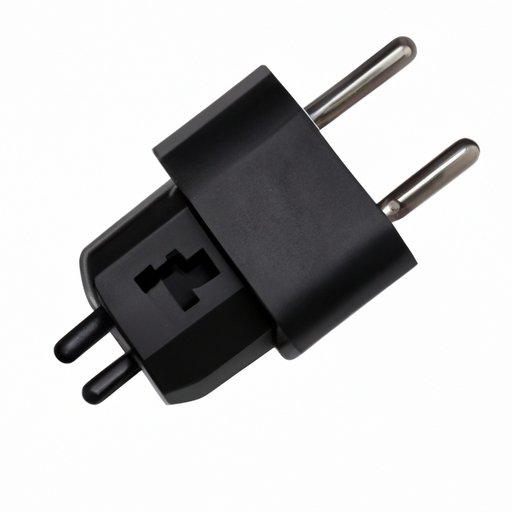
Blade-type power connectors are a popular choice for many electronic devices due to their compact size and ease of use. These connectors are commonly used in a variety of applications, including laptops, desktop computers, and other electronic devices. In this article, we will explore some of the most popular models of blade-type power connectors and discuss their features and benefits.One of the most common blade-type power connectors is the IEC 60320 C14 connector. This connector is commonly used in desktop computers and other electronic devices that require a reliable power source. The C14 connector features a male plug with three blades that can be easily inserted into a corresponding female socket. This connector is known for its durability and reliability, making it a popular choice for many electronic devices.Another popular blade-type power connector is the IEC 60320 C13 connector. This connector is commonly used in laptops and other portable electronic devices that require a compact and reliable power source. The C13 connector features a female socket with three blades that can be easily inserted into a corresponding male plug. This connector is known for its versatility and compatibility with a wide range of electronic devices.The IEC 60320 C7 connector is another popular blade-type power connector that is commonly used in small electronic devices such as radios, televisions, and other household appliances. This connector features a two-blade design that can be easily inserted into a corresponding female socket. The C7 connector is known for its compact size and ease of use, making it a popular choice for many consumer electronics.In addition to these popular models, there are also a variety of other blade-type power connectors available on the market. Some of these connectors feature unique designs and features that cater to specific applications and requirements. For example, the IEC 60320 C5 connector is commonly used in laptop power supplies due to its compact size and angled design, which allows for easy insertion and removal in tight spaces.Overall, blade-type power connectors are a popular choice for many electronic devices due to their compact size, ease of use, and reliability. Whether you are looking for a connector for your desktop computer, laptop, or household appliance, there are a variety of popular models available to suit your needs. With their durable construction and versatile design, blade-type power connectors are sure to provide a reliable power source for your electronic devices for years to come.
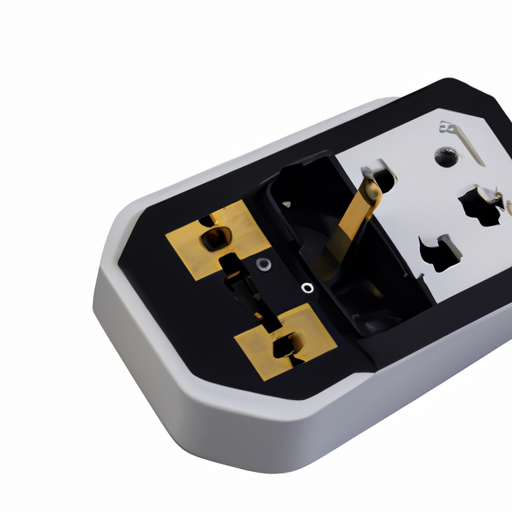
When it comes to choosing the right spot blade-type power connector, there are several factors to consider in order to ensure optimal performance and reliability. Blade-type power connectors are commonly used in a variety of applications, including data centers, telecommunications equipment, and industrial machinery. These connectors are designed to provide a secure and reliable connection for power distribution, making them essential components in many electronic systems.One of the most important factors to consider when choosing a spot blade-type power connector is the current rating. The current rating of a connector determines the maximum amount of electrical current that can safely pass through it. It is important to choose a connector with a current rating that is sufficient for the specific application in which it will be used. Choosing a connector with a current rating that is too low can result in overheating and potential damage to the connector and the connected equipment.Another important factor to consider when choosing a spot blade-type power connector is the voltage rating. The voltage rating of a connector determines the maximum voltage that it can safely handle. It is important to choose a connector with a voltage rating that is appropriate for the voltage levels present in the system in which it will be used. Choosing a connector with a voltage rating that is too low can result in electrical arcing and potential damage to the connector and the connected equipment.In addition to current and voltage ratings, it is also important to consider the size and form factor of the connector. The size and form factor of a connector can impact its compatibility with other components in the system, as well as its ease of installation and maintenance. It is important to choose a connector that is the right size and form factor for the specific application in which it will be used.Durability and reliability are also key considerations when choosing a spot blade-type power connector. Connectors that are used in harsh environments or high-vibration applications must be able to withstand these conditions without compromising performance. It is important to choose a connector that is made from high-quality materials and designed to meet industry standards for durability and reliability.When choosing a spot blade-type power connector, it is also important to consider the connector's mating cycle life. The mating cycle life of a connector refers to the number of times it can be connected and disconnected before it begins to degrade in performance. It is important to choose a connector with a mating cycle life that is sufficient for the specific application in which it will be used.In conclusion, choosing the right spot blade-type power connector is essential for ensuring optimal performance and reliability in electronic systems. By considering factors such as current and voltage ratings, size and form factor, durability and reliability, and mating cycle life, you can select a connector that meets the specific requirements of your application. By choosing a high-quality connector that is designed to meet industry standards, you can ensure a secure and reliable power connection for your electronic systems.
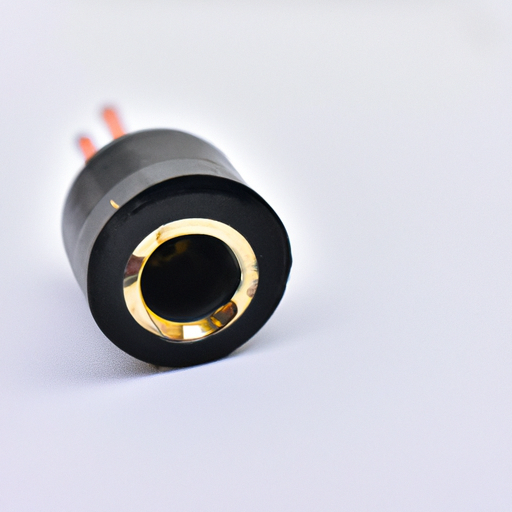
Dedicated connectors are an essential component in various industries, including automotive, aerospace, and electronics. These connectors are designed to provide a secure and reliable connection between two or more devices or components. To ensure the quality and performance of dedicated connectors, there are specific product standards that manufacturers must adhere to. In this article, we will discuss the product standards for dedicated connectors and why they are important.Product standards for dedicated connectors are established by organizations such as the International Organization for Standardization (ISO) and the Institute of Electrical and Electronics Engineers (IEEE). These standards define the requirements and specifications that dedicated connectors must meet to ensure their reliability, safety, and compatibility with other devices.One of the most important product standards for dedicated connectors is the ISO 9001 certification. This certification ensures that manufacturers have implemented a quality management system that meets international standards. It also requires manufacturers to continuously improve their processes and products to meet customer requirements.In addition to ISO 9001 certification, dedicated connectors must also meet specific technical standards set by organizations such as the IEEE. These standards define the electrical and mechanical properties of connectors, including their voltage and current ratings, contact resistance, and environmental resistance.For example, the IEEE 802.3 standard specifies the requirements for Ethernet connectors used in networking applications. This standard defines the electrical characteristics of the connectors, such as their impedance and signal integrity, to ensure reliable data transmission.Another important product standard for dedicated connectors is the UL certification. This certification is issued by Underwriters Laboratories, an independent organization that tests and certifies the safety of electrical products. UL certification ensures that dedicated connectors meet specific safety requirements, such as insulation resistance and temperature ratings.In addition to technical and safety standards, dedicated connectors must also meet industry-specific requirements. For example, connectors used in the automotive industry must comply with the Automotive Electronics Council (AEC) standards, which define the reliability and performance requirements for automotive components.Overall, product standards for dedicated connectors are essential to ensure their quality, reliability, and compatibility with other devices. By adhering to these standards, manufacturers can provide customers with connectors that meet their requirements and perform reliably in various applications.In conclusion, product standards for dedicated connectors are crucial to ensuring their quality, reliability, and safety. Manufacturers must adhere to international standards such as ISO 9001 and technical standards set by organizations like the IEEE to produce connectors that meet customer requirements. By meeting these standards, manufacturers can provide customers with connectors that perform reliably in various applications and industries.

The highly anticipated release of the new Magnetic wire connector is just around the corner, and tech enthusiasts everywhere are buzzing with excitement. This innovative new product promises to revolutionize the way we connect and charge our devices, offering a sleek and convenient solution to the age-old problem of tangled cords and fussy connections.So, when can we expect to get our hands on this game-changing gadget? While an official release date has not yet been announced, industry insiders are speculating that the Magnetic wire connector will hit the shelves sometime in the next few months. With the final touches being put on the product and production ramping up, it won't be long before consumers can experience the benefits of this cutting-edge technology for themselves.But what exactly makes the Magnetic wire connector so special? Let's take a closer look at some of the key features and benefits that have tech enthusiasts eagerly awaiting its release.First and foremost, the Magnetic wire connector offers a hassle-free way to connect and charge your devices. The magnetic design allows for quick and easy attachment, eliminating the need to fumble with cords and ports. Simply bring the connector close to your device, and it will snap into place with a satisfying click. This not only saves time and frustration but also helps to prolong the lifespan of your devices by reducing wear and tear on ports and cables.In addition to its convenience, the Magnetic wire connector also boasts impressive charging speeds. With support for fast charging technology, this device can power up your devices in a fraction of the time compared to traditional chargers. Whether you're in a hurry to get out the door or just want to top up your battery quickly, the Magnetic wire connector has you covered.Furthermore, the Magnetic wire connector is designed with versatility in mind. Compatible with a wide range of devices, including smartphones, tablets, laptops, and more, this connector is a one-size-fits-all solution for all your charging needs. No more hunting for the right cable or adapter – the Magnetic wire connector can handle it all.But perhaps the most exciting feature of the Magnetic wire connector is its durability. Constructed from high-quality materials and built to last, this connector is designed to withstand the rigors of daily use. Say goodbye to flimsy cables that fray and break over time – the Magnetic wire connector is built to go the distance.So, when can we expect to see the Magnetic wire connector on the market? While an exact release date has not been confirmed, industry insiders are predicting that the product will be available for purchase within the next few months. With production in full swing and the final touches being put on the design, it won't be long before consumers can experience the convenience and efficiency of this groundbreaking technology for themselves.In conclusion, the Magnetic wire connector is set to revolutionize the way we connect and charge our devices. With its sleek design, fast charging capabilities, versatility, and durability, this innovative product is sure to be a game-changer in the world of tech accessories. Keep an eye out for the official release date, and be among the first to experience the benefits of the Magnetic wire connector for yourself.
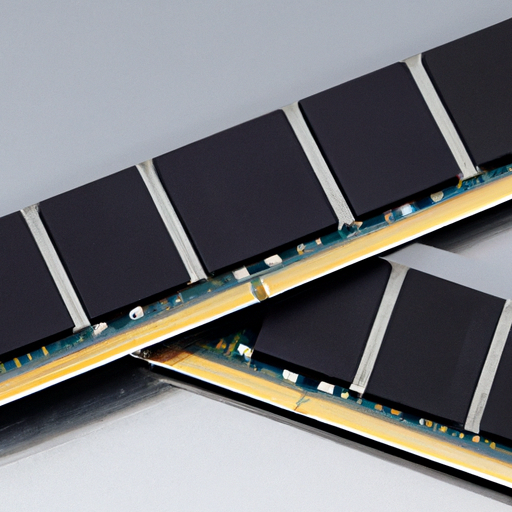
Memory connectors are an essential component in electronic devices, allowing for the transfer of data between the memory module and the motherboard. These connectors are crucial for the proper functioning of devices such as computers, smartphones, and tablets. The production process of memory connectors is a complex and intricate one, involving several steps to ensure the highest quality and reliability of the final product.The mainstream production process of memory connectors typically involves the following steps:1. Design and Development: The first step in the production process of memory connectors is the design and development phase. This involves creating a detailed blueprint of the connector, including its dimensions, materials, and specifications. Engineers and designers work together to come up with a design that meets the requirements of the device it will be used in.2. Material Selection: Once the design is finalized, the next step is to select the materials that will be used to manufacture the memory connector. The materials chosen must be durable, conductive, and resistant to corrosion. Common materials used in memory connectors include copper, gold, and various types of plastics.3. Tooling and Molding: After the materials have been selected, the next step is to create the tooling and molds that will be used to manufacture the memory connectors. This involves using specialized equipment and machinery to create the precise shapes and sizes required for the connectors.4. Injection Molding: Injection molding is a common manufacturing process used to produce memory connectors. In this process, molten material is injected into a mold cavity, where it cools and solidifies to form the desired shape. Injection molding is a cost-effective and efficient way to produce large quantities of memory connectors.5. Plating: Once the memory connectors have been molded, they are plated with a thin layer of metal to improve their conductivity and corrosion resistance. Common plating materials include gold, silver, and nickel. The plating process is essential for ensuring the reliability and longevity of the connectors.6. Quality Control: Throughout the production process, quality control measures are implemented to ensure that the memory connectors meet the required specifications and standards. This involves testing the connectors for conductivity, durability, and compatibility with the devices they will be used in.7. Packaging and Shipping: Once the memory connectors have passed quality control, they are packaged and prepared for shipping to customers. The connectors are typically packaged in trays or reels to protect them during transit.Overall, the production process of memory connectors is a complex and multi-step process that requires precision, attention to detail, and quality control measures. By following these steps, manufacturers can produce high-quality memory connectors that meet the demands of today's electronic devices.

Casing products are an essential component in the packaging industry, providing numerous advantages for both manufacturers and consumers. Casing products refer to the outer covering or container that holds a product, protecting it from damage, contamination, and tampering. From food items to electronics, casing products play a crucial role in ensuring the safety and quality of goods during storage, transportation, and display. In this article, we will explore the various advantages of casing products and why they are an indispensable part of the packaging industry.1. Protection and SafetyOne of the primary advantages of casing products is the protection they offer to the enclosed goods. Whether it is fragile items like glassware or perishable goods like fruits and vegetables, casing products provide a barrier against external elements such as moisture, dust, and physical impact. This protection helps prevent damage during handling, storage, and transportation, ensuring that the product reaches the end consumer in pristine condition. Casing products also play a crucial role in ensuring the safety of consumers by preventing contamination and tampering, particularly in the food and pharmaceutical industries.2. Branding and MarketingCasing products serve as a powerful tool for branding and marketing, allowing manufacturers to showcase their products in an attractive and eye-catching manner. The design, color, and material of the casing can be customized to reflect the brand identity and appeal to the target audience. By incorporating logos, slogans, and product information on the casing, manufacturers can create a strong brand presence and enhance brand recognition. Casing products also provide an opportunity for storytelling and conveying the brand's values and ethos, helping to build a connection with consumers and differentiate the product from competitors.3. Shelf Appeal and VisibilityIn a crowded marketplace, shelf appeal and visibility are crucial for attracting consumers and driving sales. Casing products play a vital role in enhancing the visual appeal of products on the retail shelf, making them stand out from the competition. Eye-catching designs, vibrant colors, and innovative packaging solutions can capture the attention of consumers and entice them to make a purchase. Casing products also provide ample space for product information, promotional messages, and call-to-action, helping to communicate the value proposition and benefits of the product to potential buyers.4. Convenience and FunctionalityCasing products are designed to enhance the convenience and functionality of the packaged goods, making them easier to handle, store, and use. Features such as handles, resealable closures, and easy-open mechanisms improve the user experience and make the product more user-friendly. Casing products can also be designed to optimize space utilization, reduce packaging waste, and improve product shelf life. By incorporating innovative packaging solutions, manufacturers can enhance the overall customer experience and build brand loyalty.5. Sustainability and Environmental ImpactIn recent years, there has been a growing emphasis on sustainability and environmental responsibility in the packaging industry. Casing products play a crucial role in reducing the environmental impact of packaging by using eco-friendly materials, optimizing packaging design, and promoting recycling and reuse. Sustainable casing products such as biodegradable, compostable, and recyclable packaging solutions help minimize waste generation, conserve natural resources, and reduce carbon footprint. By adopting sustainable packaging practices, manufacturers can demonstrate their commitment to environmental stewardship and appeal to eco-conscious consumers.6. Regulatory Compliance and Safety StandardsCasing products are subject to stringent regulatory requirements and safety standards to ensure the protection of consumers and compliance with legal obligations. Manufacturers must adhere to guidelines related to packaging materials, labeling, product information, and safety warnings to ensure that the casing products meet the necessary quality and safety standards. By using high-quality materials, conducting rigorous testing, and adhering to industry best practices, manufacturers can ensure that their casing products are safe, reliable, and compliant with regulatory requirements.In conclusion, casing products offer a wide range of advantages for manufacturers, retailers, and consumers, making them an indispensable part of the packaging industry. From protection and safety to branding and marketing, casing products play a crucial role in enhancing the value proposition of products and driving sales. By leveraging innovative packaging solutions, sustainable practices, and regulatory compliance, manufacturers can create packaging solutions that not only meet the needs of consumers but also contribute to a more sustainable and responsible packaging industry. As the packaging landscape continues to evolve, casing products will remain a key component in delivering safe, convenient, and visually appealing products to consumers around the world.
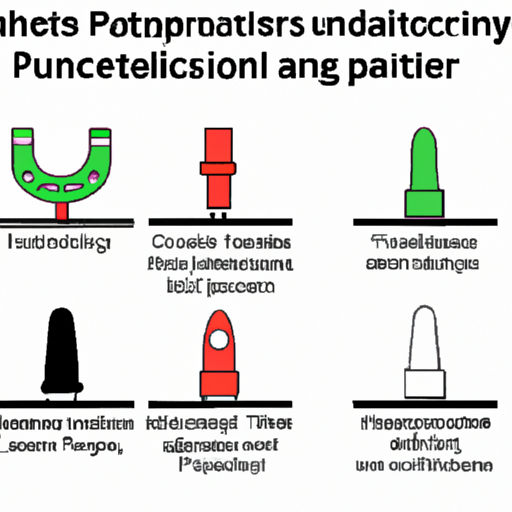
Plug-in and pull-out connectors are essential components in various industries, enabling the easy and secure connection of different devices and equipment. As such, there are several industries that contain important patents related to plug-in and pull-out connectors. These industries include:1. Electronics and technology: The electronics and technology industry is one of the primary industries where plug-in and pull-out connectors are widely used. These connectors are essential for connecting various electronic devices, such as computers, smartphones, and other consumer electronics. Important patents related to plug-in and pull-out connectors in this industry cover innovations in connector design, materials, and manufacturing processes.2. Automotive: The automotive industry also relies heavily on plug-in and pull-out connectors for various applications, such as connecting sensors, lights, and other electronic components in vehicles. Patents related to plug-in and pull-out connectors in the automotive industry often focus on durability, reliability, and performance in harsh environments, such as extreme temperatures and vibrations.3. Aerospace and defense: In the aerospace and defense industry, plug-in and pull-out connectors are crucial for connecting avionics systems, communication equipment, and other electronic devices in aircraft and military vehicles. Patents related to plug-in and pull-out connectors in this industry often emphasize high reliability, electromagnetic compatibility, and resistance to harsh environmental conditions.4. Medical devices: The medical devices industry also utilizes plug-in and pull-out connectors for connecting various medical equipment, such as monitoring devices, imaging systems, and surgical instruments. Important patents related to plug-in and pull-out connectors in the medical devices industry focus on safety, sterilization, and compatibility with medical standards and regulations.5. Industrial automation: In the industrial automation industry, plug-in and pull-out connectors are essential for connecting sensors, actuators, and other devices in automated manufacturing processes. Patents related to plug-in and pull-out connectors in this industry often address issues such as signal integrity, data transmission speed, and compatibility with industrial communication protocols.Overall, plug-in and pull-out connectors play a critical role in various industries, enabling the seamless and reliable connection of electronic devices and equipment. Patents related to plug-in and pull-out connectors in these industries cover a wide range of innovations and technologies, driving advancements in connector design, performance, and reliability. As technology continues to evolve, we can expect to see further developments and innovations in plug-in and pull-out connectors across different industries, shaping the future of connectivity and communication.
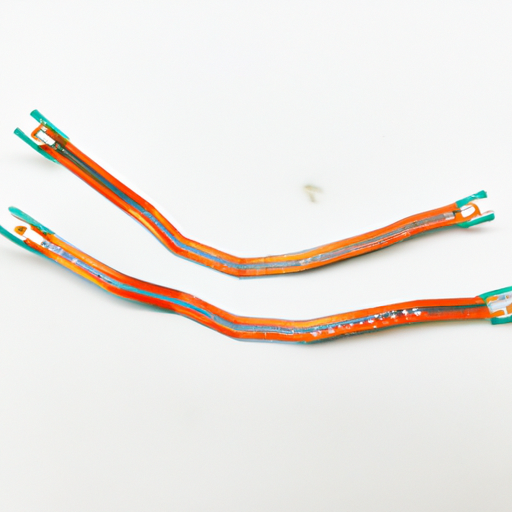
Hot spot FPC flat flexible connectors are essential components in various electronic devices, providing a reliable and efficient connection between different components. These connectors are widely used in industries such as automotive, consumer electronics, telecommunications, and medical devices. The price of these connectors can vary depending on the model, specifications, and quantity ordered.Hot spot FPC flat flexible connectors are available in a wide range of models to suit different applications and requirements. Some of the popular models include the FPC 0.5mm pitch connector, FPC 1.0mm pitch connector, and FPC 1.25mm pitch connector. These connectors are designed to provide a flexible and reliable connection between PCBs, displays, and other components in electronic devices.The price of hot spot FPC flat flexible connectors can vary depending on the model and specifications. Generally, the price of these connectors ranges from a few cents to a few dollars per piece. The price may also vary depending on the quantity ordered, with bulk orders typically receiving discounts.When purchasing hot spot FPC flat flexible connectors, it is important to consider the specific requirements of the application. Factors such as pitch size, number of contacts, and operating temperature range should be taken into account to ensure compatibility and reliability. It is also important to consider the quality and reliability of the connectors, as using low-quality connectors can lead to performance issues and reliability problems in electronic devices.In addition to the price of the connectors themselves, it is also important to consider other costs such as shipping, taxes, and import duties. These additional costs can vary depending on the supplier and location of the buyer. It is important to factor in these costs when budgeting for the purchase of hot spot FPC flat flexible connectors.Overall, hot spot FPC flat flexible connectors are essential components in electronic devices, providing a reliable and efficient connection between different components. The price of these connectors can vary depending on the model, specifications, and quantity ordered. It is important to consider the specific requirements of the application and factor in additional costs when purchasing these connectors. By choosing high-quality connectors that meet the requirements of the application, electronic device manufacturers can ensure reliable performance and long-term durability.

In today's fast-paced world, convenience is key. Multi-purpose products have become increasingly popular as they offer a wide range of benefits and advantages. These products are designed to serve multiple functions, saving time, money, and space. From skincare to household items, multi-purpose products have revolutionized the way we approach our daily routines.One of the main advantages of multi-purpose products is their versatility. Instead of having to purchase multiple products for different tasks, a single multi-purpose product can often do the job just as well. This not only saves money but also reduces clutter and waste. For example, a 2-in-1 shampoo and conditioner can simplify your shower routine and save you time in the morning.Multi-purpose products are also great for travel. Instead of lugging around multiple bottles and containers, you can pack just a few multi-purpose products that can serve multiple functions. This not only saves space in your luggage but also makes it easier to stay organized while on the go. Whether you're going on a weekend getaway or a long vacation, multi-purpose products can make packing a breeze.Another advantage of multi-purpose products is their efficiency. Instead of having to use multiple products to achieve the same result, a single multi-purpose product can often get the job done faster and more effectively. This is especially useful for busy individuals who don't have time to spend on elaborate beauty or grooming routines. With multi-purpose products, you can streamline your routine and still look and feel your best.Multi-purpose products are also environmentally friendly. By reducing the number of products you use, you can cut down on packaging waste and reduce your carbon footprint. Many multi-purpose products are also made with natural and sustainable ingredients, making them a more eco-friendly choice. By choosing multi-purpose products, you can do your part to help protect the planet.In addition to their practical benefits, multi-purpose products can also be cost-effective. While some multi-purpose products may have a higher upfront cost, they often end up saving you money in the long run. By replacing multiple products with a single multi-purpose product, you can cut down on your overall spending on beauty, grooming, and household items. This can add up to significant savings over time.Multi-purpose products are also great for simplifying your daily routine. Instead of having to juggle multiple products and steps, you can streamline your routine with a few key multi-purpose products. This can help you save time and reduce stress, making your daily routine more manageable and enjoyable. Whether you're a busy professional, a parent on the go, or just someone looking to simplify their life, multi-purpose products can help you achieve your goals.Overall, multi-purpose products offer a wide range of benefits and advantages. From their versatility and efficiency to their cost-effectiveness and environmental friendliness, multi-purpose products are a great choice for anyone looking to simplify their life and streamline their routines. Whether you're looking to save time, money, or space, multi-purpose products can help you achieve your goals and make your life easier. So why not give them a try and see the difference they can make in your daily routine?
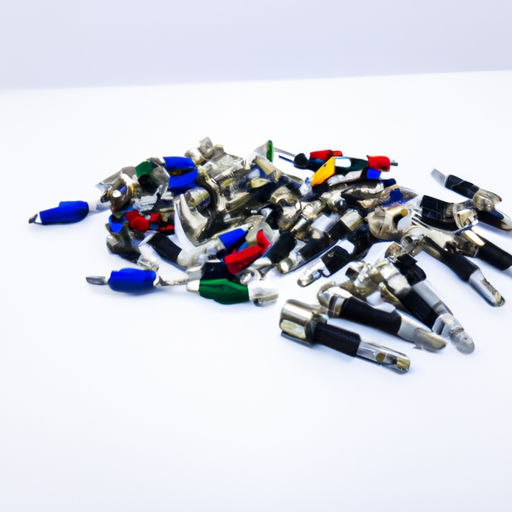
Tower connectors are essential components in various electronic devices and systems, providing a reliable and secure connection between different components. With the increasing demand for high-performance and efficient connectors, several models have emerged as popular choices in the mainstream market. In this article, we will explore the top 10 tower connector models that are widely used in various industries.1. Molex Tower Connector: Molex is a well-known brand in the connector industry, and their tower connectors are highly regarded for their quality and reliability. The Molex tower connector features a compact design, high durability, and excellent performance, making it a popular choice for a wide range of applications.2. TE Connectivity Tower Connector: TE Connectivity is another leading manufacturer of tower connectors, known for their innovative designs and high-quality products. The TE Connectivity tower connector offers superior electrical performance, robust construction, and easy installation, making it a preferred choice for many engineers and designers.3. Amphenol Tower Connector: Amphenol is a trusted name in the connector industry, and their tower connectors are known for their exceptional reliability and performance. The Amphenol tower connector features a rugged design, high mating cycles, and excellent signal integrity, making it ideal for demanding applications in harsh environments.4. Hirose Tower Connector: Hirose is a Japanese manufacturer known for their high-quality connectors, including tower connectors. The Hirose tower connector is designed for high-speed data transmission, with features such as low insertion loss, high signal integrity, and excellent EMI/RFI shielding, making it a popular choice for telecommunications and networking applications.5. JST Tower Connector: JST is a well-established brand in the connector industry, offering a wide range of tower connectors for various applications. The JST tower connector is known for its compact size, high reliability, and cost-effective pricing, making it a popular choice for consumer electronics, automotive, and industrial applications.6. Phoenix Contact Tower Connector: Phoenix Contact is a leading manufacturer of industrial connectors, including tower connectors for automation and control systems. The Phoenix Contact tower connector features a robust design, high current-carrying capacity, and easy field installation, making it a preferred choice for industrial applications.7. Harting Tower Connector: Harting is a German manufacturer known for their high-quality connectors, including tower connectors for industrial and commercial applications. The Harting tower connector offers excellent mechanical and electrical performance, with features such as high mating cycles, vibration resistance, and IP-rated sealing, making it suitable for harsh environments.8. LEMO Tower Connector: LEMO is a Swiss manufacturer known for their precision connectors, including tower connectors for medical, military, and industrial applications. The LEMO tower connector features a rugged design, high signal integrity, and excellent EMI/RFI shielding, making it a popular choice for critical applications where reliability is paramount.9. ITT Cannon Tower Connector: ITT Cannon is a well-known brand in the connector industry, offering a wide range of tower connectors for aerospace, defense, and industrial applications. The ITT Cannon tower connector features a high-density design, high-speed data transmission capabilities, and rugged construction, making it ideal for demanding applications in harsh environments.10. Fischer Connectors Tower Connector: Fischer Connectors is a Swiss manufacturer known for their high-performance connectors, including tower connectors for military, medical, and industrial applications. The Fischer Connectors tower connector features a compact design, high mating cycles, and excellent signal integrity, making it a popular choice for applications where space is limited and reliability is critical.In conclusion, tower connectors play a crucial role in ensuring reliable and secure connections in electronic devices and systems. The top 10 tower connector models mentioned in this article are widely used in various industries due to their high quality, reliability, and performance. Engineers and designers can choose from these popular models based on their specific requirements and application needs.

Components are essential parts of any electronic device or system, and there are many popular models that are widely used in various industries. These components play a crucial role in the functioning of electronic devices, and they come in different shapes, sizes, and functionalities. In this article, we will discuss some of the popular component product models that are commonly used in the electronics industry.1. Resistors:
Resistors are one of the most basic components used in electronic circuits. They are used to limit the flow of electric current in a circuit and are available in various resistance values. Some popular resistor models include the 1/4W Carbon Film Resistor, 1/2W Metal Film Resistor, and 1W Wirewound Resistor.2. Capacitors:
Capacitors are used to store and release electrical energy in a circuit. They come in different types, such as ceramic, electrolytic, and tantalum capacitors. Some popular capacitor models include the Ceramic Disc Capacitor, Electrolytic Capacitor, and Tantalum Capacitor.3. Diodes:
Diodes are semiconductor devices that allow current to flow in one direction only. They are used in rectifier circuits, voltage regulators, and signal demodulation. Some popular diode models include the 1N4148 Signal Diode, 1N4007 Rectifier Diode, and Schottky Diode.4. Transistors:
Transistors are semiconductor devices that amplify or switch electronic signals. They come in different types, such as bipolar junction transistors (BJTs) and field-effect transistors (FETs). Some popular transistor models include the 2N2222 NPN Transistor, BC547 NPN Transistor, and IRF540 N-Channel MOSFET.5. Integrated Circuits (ICs):
Integrated circuits are complex components that contain multiple electronic components on a single chip. They are used in a wide range of electronic devices, such as computers, smartphones, and televisions. Some popular IC models include the 555 Timer IC, LM317 Voltage Regulator IC, and ATmega328 Microcontroller IC.6. Inductors:
Inductors are passive components that store energy in the form of a magnetic field. They are used in filters, oscillators, and power supplies. Some popular inductor models include the Axial Inductor, Toroidal Inductor, and SMD Power Inductor.7. Transformers:
Transformers are used to transfer electrical energy from one circuit to another through electromagnetic induction. They are commonly used in power supplies, audio amplifiers, and communication systems. Some popular transformer models include the Step-Up Transformer, Step-Down Transformer, and Audio Output Transformer.8. Relays:
Relays are electromechanical switches that are used to control high-power circuits with low-power signals. They are commonly used in automation systems, motor control, and safety circuits. Some popular relay models include the SPDT Relay, DPDT Relay, and Solid-State Relay.9. Connectors:
Connectors are used to establish electrical connections between different components or devices. They come in various types, such as USB connectors, HDMI connectors, and D-sub connectors. Some popular connector models include the USB Type-A Connector, HDMI Connector, and DB9 Connector.10. Switches:
Switches are used to control the flow of electric current in a circuit. They come in different types, such as toggle switches, push-button switches, and rotary switches. Some popular switch models include the SPST Toggle Switch, DPDT Push-Button Switch, and Rotary Selector Switch.In conclusion, these are just a few of the popular component product models that are commonly used in the electronics industry. Each of these components plays a crucial role in the functioning of electronic devices, and they are essential for building circuits and systems. Whether you are a hobbyist, student, or professional engineer, having a good understanding of these component models is essential for designing and troubleshooting electronic circuits.

Heavy load connectors are essential components in industrial applications where high currents and voltages need to be transmitted reliably and safely. These connectors are designed to withstand harsh environmental conditions, high mechanical loads, and provide secure connections for heavy-duty equipment. There are several mainstream models of heavy load connectors available in the market, each with its unique features and specifications. In this article, we will explore some of the popular models of heavy load connectors and their applications.1. Harting Han Series:
The Harting Han series is one of the most widely used heavy load connector models in industrial applications. These connectors are known for their robust construction, high reliability, and versatility. The Han series connectors are available in various sizes and configurations, making them suitable for a wide range of applications, from machinery and automation to power distribution and transportation. These connectors feature a modular design, allowing for easy assembly and customization according to specific requirements. The Han series connectors are also IP-rated for protection against dust and water ingress, making them suitable for outdoor and harsh environments.2. Weidmuller RockStar Series:
The Weidmuller RockStar series is another popular heavy load connector model known for its high performance and durability. These connectors are designed to withstand high mechanical loads, extreme temperatures, and harsh environmental conditions. The RockStar series connectors are available in different sizes and configurations, including power, signal, and hybrid connectors, making them suitable for a wide range of applications. These connectors feature a rugged housing, secure locking mechanism, and high contact density, ensuring reliable and safe connections in demanding industrial environments.3. Phoenix Contact Heavycon Series:
The Phoenix Contact Heavycon series is a versatile heavy load connector model designed for high-current applications. These connectors are available in various sizes and configurations, including modular and single-pole connectors, making them suitable for different power transmission requirements. The Heavycon series connectors feature a robust housing, high contact reliability, and easy assembly, making them ideal for industrial machinery, power distribution, and transportation applications. These connectors are also IP-rated for protection against dust and water ingress, ensuring reliable performance in harsh environments.4. Lapp EPIC Series:
The Lapp EPIC series is a popular heavy load connector model known for its high-quality construction and reliable performance. These connectors are designed for demanding industrial applications, including machinery, automation, and power distribution. The EPIC series connectors are available in various sizes and configurations, including rectangular and circular connectors, making them suitable for different installation requirements. These connectors feature a rugged housing, high contact reliability, and easy assembly, ensuring secure connections in high-current and high-voltage applications.5. Amphenol Amphe-Lite Series:
The Amphenol Amphe-Lite series is a heavy load connector model designed for high-power applications in industrial and military environments. These connectors are known for their high current-carrying capacity, rugged construction, and reliable performance. The Amphe-Lite series connectors are available in different sizes and configurations, including power, signal, and hybrid connectors, making them suitable for a wide range of applications. These connectors feature a secure locking mechanism, high contact density, and corrosion-resistant materials, ensuring long-term reliability in harsh operating conditions.In conclusion, heavy load connectors are essential components in industrial applications where high currents and voltages need to be transmitted reliably and safely. There are several mainstream models of heavy load connectors available in the market, each with its unique features and specifications. The models mentioned above, including the Harting Han series, Weidmuller RockStar series, Phoenix Contact Heavycon series, Lapp EPIC series, and Amphenol Amphe-Lite series, are some of the popular choices for heavy-duty applications. When selecting a heavy load connector for a specific application, it is essential to consider factors such as current rating, voltage rating, environmental conditions, and installation requirements to ensure optimal performance and reliability.